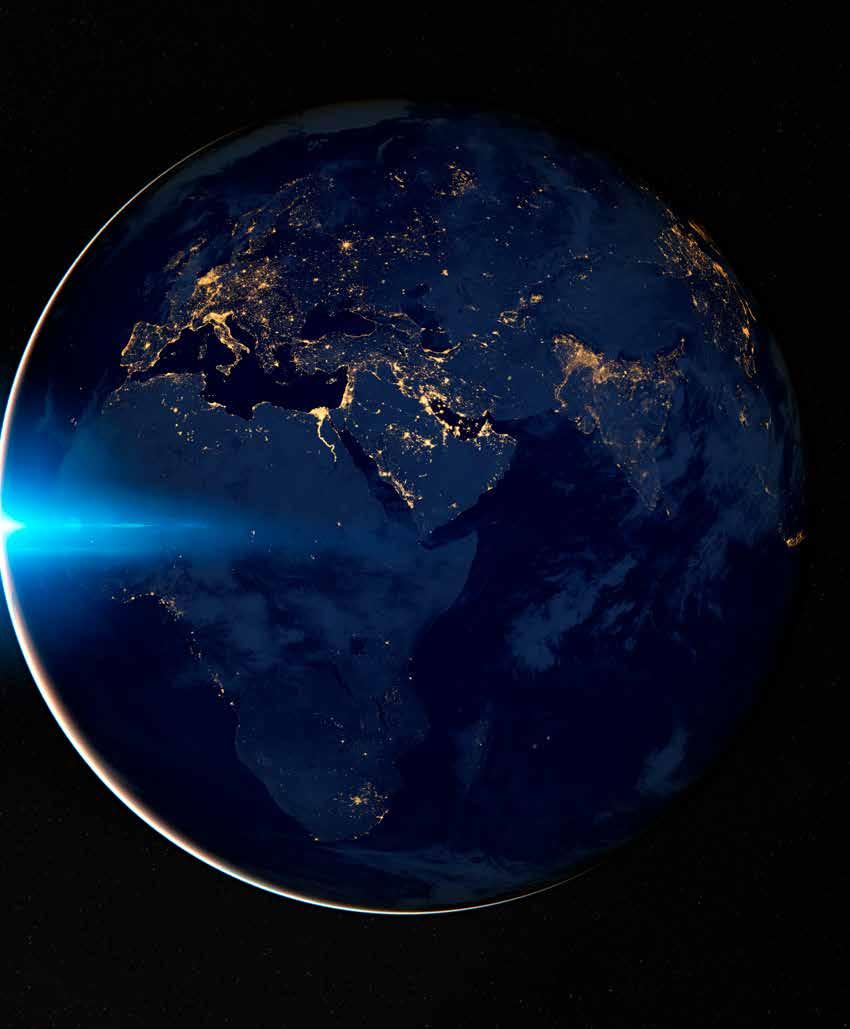
4 minute read
news and trends
News that made international headlines
WE'VE GOT YOU COVERED WITH THE LATEST ON SCIENTIFIC BREAKTHROUGHS AND DISCOVERIES FROM AROUND THE WORLD.
Advertisement
By: Zakiyah Ebrahim
NASA DESIGNS EPIC SENSOR ‘BACKPACK’ FOR MOON EXPLORERS
NASA is currently designing a backpack-sized device to help astronauts navigate terrain on future expeditions to the Moon – and there are photos! Named the Kinematic Navigation and Cartography Knapsack (KNaCK), the portable scanner will help astronauts walk around areas with poor visibility and that are unchartered (areas that are not mapped). It will achieve this by constantly scanning the ground as the astronaut walks around, and will collect detailed information on the surrounding surface topology in the process.
NEWLY DISCOVERED EXOPLANET FORMED IN A STRANGE WAY
NASA’s Hubble Space Telescope, launched into low Earth orbit in 1990, has photographed a newly discovered exoplanet right in the act of formation. Named AB Aurigae b, researchers say it came to be in an entirely unexpected way – potentially through a violent implosion of gas and dust. It is nine times the mass of Jupiter, and is still growing. The discovery is only the second direct observation of a protoplanet – a large body of matter in orbit around the sun or a star, and is thought to be developing into a planet. "Nature is clever; it can produce planets in a range of different ways," said lead researcher Thayne Currie of the Subaru Telescope and Eureka Scientific.
JESSICA WATKINS: THE FIRST BLACK FEMALE ASTRONAUT ON EXTENDED ISS MISSION
In a huge milestone, NASA astronaut Jessica Watkins is the fifth Black woman to go to space and the first to be aboard the International Space Station (ISS), where she will spend six months – from April 2022 – with three fellow astronauts in the ISS laboratory (in space), conducting research. Watkins, who joined NASA as an intern and was an astronaut candidate in 2017, told NBC News: “The reason we’re able to arrive at this time is because of the legacy of those who have come before to allow for this moment.”
ELON MUSK SAYS LIFE ON MARS WILL BE "DANGEROUS, CRAMPED, DIFFICULT, HARD WORK"
South African-born Elon Musk says life on Mars will be far from comfortable. The SpaceX CEO, who is on a mission to enable people to live on other planets, and to build a full-sized city on Mars, said in April: “It's very important to emphasise that Mars, especially in the beginning, will not be luxurious." Musk was chatting to Chris Anderson, the head of TED conferences, in a video interview. "It will be dangerous, cramped, difficult, hard work,” said Musk. The billionaire anticipates that SpaceX could have its first orbital launch for the spacecraft, named Starship, "within a few months”.
News making headlines in Africa
WE TAKE A LOOK AT THREE SPACE SCIENCE STORIES FROM THE MOTHER CONTINENT THAT ARE WORTH SHARING.

By: Zakiyah Ebrahim
POWERFUL ‘NKALAKATHA’ MEGAMASER DISCOVERED BY SOUTH AFRICAN TELESCOPE
In April this year, astronauts detected a powerful radiowave laser in space, known as a megamaser. According to reports, the light from this space laser travelled an incredible 58 thousand billion billion kilometres to reach our planet! An international team of astronomers observed this light, thanks to the South African Radio Astronomy Observatory's MeerKAT telescope.
So what’s a megamaser? They occur when two galaxies – which are made up of hundreds of billions of stars, dark matter and gas – crash into each other. "When galaxies collide, the gas they contain becomes extremely dense and can trigger concentrated beams of light to shoot out," said Dr Marcin Glowacki, who led the team. The researchers named the laser “Nkalakatha”, which translates to "big boss" in isiZulu. Glowacki said it was impressive that, even with just a single night of observations, the team already found a record-breaking megamaser. "It shows just how good the telescope is," he said.
Read more about this megamaser on Page 28 on this magazine.
AFRICA’S FIRST MILLIMETRE-RANGE RADIO TELESCOPE TO BE BUILT
A R388 million facility in Namibia will become Africa’s first millimetre-range radio telescope, which will help to image black holes. According to Nature, the telescope will be situated on or near Table Mountain in the Gamsberg Nature Reserve in Namibia. It will be a repurposed 15-metre telescope, which is currently located at La Silla in Chile. The telescope is being donated by the Onsala Space Observatory in Sweden and the European Southern Observatory in Germany.
Wits University astrophysicist, Roger Deane, said that this telescope will “fill a missing observing window on the continent” and will be important for Africa’s astrophysics communities, while Charles Takalana, from the African Astronomical Society in Cape Town, said that the project is “another step toward solidifying Africa’s position as a globally competitive and capable player in the field of astronomy”.
AGENDA 2063: PLANS FOR OUTER SPACE HOLD THE KEY TO SUCCESS, SAYS AFRICAN SCIENTIST
Africa has ambitious goals for Agenda 2063, a master plan spearheaded by the African Union, for transforming the continent into a global powerhouse by 2063. It aims to ensure that Africa’s developments are driven by investments that will improve our infrastructure, agricultural practices, outer space technology and access to quality healthcare and education, so that Africans can enable their full potential.
The agenda has 15 flagship projects, but Etim Offiong, a scientific officer at the African Regional Centre for Space Science and Technology Education in English, in Nigeria, believes that the Africa outer space programme, which aims to allow Africa to obtain maximum benefits from space science, is the core of the plan. The programme has direct or indirect impacts on the other flagship programmes. Despite this, it hasn’t received enough attention, he says.
“I believe the African outer space programme is a means to meet the ends of other flagship programmes in Agenda 2063. It needs more attention from the African Union,” he wrote in The Conversation.










